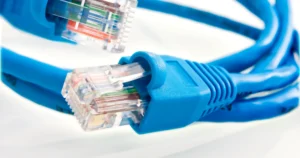In today’s digital age, where connectivity is paramount for businesses and individuals alike, the importance of a robust network infrastructure cannot be overstated. At the heart of every reliable network lies an Network Cabling Solutions. Whether it’s for data transmission, voice communication, or multimedia streaming, network cables form the backbone of modern communication networks.
In this guide, we’ll delve into the intricacies of Network Cabling Solutions, exploring the various types, installation techniques, maintenance practices, and emerging trends in the field. From the basics of cable network providers to advanced solutions tailored to meet the demands of tomorrow’s technology landscape, we’ll cover it all. So, let’s dive in and unravel the world of network cabling together.
Introduction to Network Cabling:
Network cabling service as the physical medium through which data travels within a network. It encompasses a wide range of cables, connectors, and related hardware designed to facilitate reliable communication between devices. From transmitting internet signals in homes to supporting mission-critical operations in enterprise environments, cable network providers play a pivotal role in modern connectivity.

Types of Network Cables:
Network cables come in various types, each suited for specific applications and environments. The most common types include:
Ethernet Cables (Cat5e, Cat6, Cat6a): Ideal for wired Ethernet networks, these cables are widely used in both residential and commercial settings.
Fiber Optic Cables: Known for their high-speed data transmission capabilities and immunity to electromagnetic interference, fiber optic cables are indispensable in long-distance communication and high-bandwidth applications.
Coaxial Cables: Primarily used in cable television (CATV) and broadband internet connections, coaxial cables offer reliable performance and excellent signal quality.
Structured Cabling Systems:
Structured network cable wiring refers to a standardized approach to designing and installing network infrastructure. It involves organizing cables and related hardware in a systematic manner to optimize performance, scalability, and ease of maintenance. Key components of structured cabling systems include:
- Patch Panels
- Keystone Jacks
- Cable Trays
- Cable Management Systems
By implementing structured network cabling services, organizations can streamline their network operations and ensure seamless connectivity across various devices and locations.
Benefits of Proper Network Cabling:
A well-designed and implemented network cabling infrastructure offers several benefits, including:
Enhanced Reliability: Properly installed cables reduce the risk of signal loss, downtime, and performance issues, ensuring reliable connectivity at all times.
Scalability: Structured cabling systems are inherently scalable, allowing organizations to easily accommodate future growth and technological advancements without significant infrastructure changes.
Improved Performance: High-quality cables and connectors optimize data transmission speeds, resulting in faster network performance and reduced latency.
Simplified Troubleshooting: Well-organized cabling makes it easier to identify and resolve connectivity issues, minimizing downtime and improving overall network efficiency.
Planning and Designing Network Cabling Infrastructure:
Effective planning and design are critical to the success of any network cabling project. Before installation begins, thorough assessment and planning are essential to ensure that the infrastructure meets the organization’s current and future needs. Key considerations during the planning phase include:
- Understanding the requirements and objectives of the network
- Conducting site surveys to assess existing infrastructure and identify potential challenges
- Selecting the appropriate cable types, connectors, and hardware
- Creating detailed schematics and cable routing plans
By taking the time to plan and design the Network Cabling Solutions infrastructure properly, organizations can avoid costly mistakes and ensure optimal performance and reliability.
Installation Techniques for Network Cables:
Proper installation is crucial to the performance and longevity of network cabling systems. Here are some best practices to follow during the installation process:
- Cable Path Planning: Carefully plan the route for running cables, avoiding interference from electrical lines, HVAC systems, and other sources of electromagnetic interference.
- Cable Management: Use cable trays, conduits, and raceways to organize and protect cables, minimizing the risk of damage and tangling.
- Cable Termination: Ensure proper termination of cables at both ends, following manufacturer specifications and industry standards to maintain signal integrity.
- Testing and Certification: Thoroughly test each cable after installation using appropriate testing equipment to verify compliance with performance standards and identify any faults or defects.
By adhering to proper installation techniques, organizations can maximize the reliability and performance of their computer networking cable connection.
Cable Management Best Practices:
Effective cable management is essential for maintaining a neat and organized network environment. Some key best practices include:
Labeling: Clearly label cables and ports to facilitate easy identification and troubleshooting.
Use of Cable Management Tools: Utilize cable ties, Velcro straps, and cable organizers to bundle and secure cables, preventing tangling and minimizing clutter.
Proper Ventilation: Ensure adequate airflow around cables to prevent overheating and minimize the risk of cable damage.
Regular Maintenance: Periodically inspect and reorganize cables to address any issues and optimize cable IT management efficiency.
Implementing robust Network Cabling Solutions management practices not only improves the aesthetics of the network infrastructure but also enhances accessibility and maintenance capabilities.
Testing and Certification of Network Cabling:
Before putting a network cabling system into service, it’s essential to perform comprehensive testing and certification to validate its performance and compliance with industry standards. Common testing procedures include:
Continuity Testing: Checks for proper connectivity and verifies that all conductors are properly terminated.
Cable Length Measurement: Determines the length of each cable segment to ensure compliance with length limitations specified by standards such as TIA/EIA-568.
Signal Quality Testing: Measures parameters such as attenuation, crosstalk, and signal-to-noise ratio to assess the overall quality of the cable installation.
Certification: Upon successful completion of testing, a certification report is generated, documenting the test results and confirming compliance with relevant standards.
By conducting thorough testing and certification, organizations can ensure the reliability and performance of their Network Cabling Solutions infrastructure, minimizing the risk of connectivity issues and downtime.



